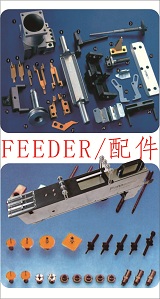Virtual Course: Cost Conscious Test Strategies for Electrical Cost Products
Category: |
|
Where | When: |
|
Description: |
SMTA International Professional Development Course Wednesday, April 6, 2022 | 10:00am-1:30pm US Central When:Wednesday, April 6, 2022 Where:Online Presenter:Robert Hanson, Robert Hanson Consulting Contact:SMTA HQ This tutorial will focus on the main issues of testing today which consist of (a) disciplines of testing the bareboard, (b) testing on the production line for minimum ppm defects, (c) testing for fault detection/fault isolation on the production line using ICT, flying probe and vision for correcting the processes. Finally, at the system level static and dynamic functional test is performed using embedded firmware, boundary SCAN and functional test equipment. However, the reliability of the end item is predicated on strategic testing of all items that defines the system performance. 1. Testing at the Printed Circuit Board (PCB) Level • Testing the PCB for opens, shorts, and impedance quality. How PCB testing is conducted: Bed-of-Nails testers, Flying Probe, and Vision. How to test PCBs with small via targets and testing for high-density PCBs like BGA land patterns. • Testing blind and buried vias, how vision is used to test for cracks, barrel deformations and copper fill. • Cost of Test – What are the test cost ratios if the fault is detected at End Item functional versus PCB functions versus PCB production line versus bareboard. 2. Testing on the Production Line • No-clean solder paste and In-Circuit (ICT) bed-of-nails (BON) contamination, vias under components—pros and cons. Purpose of 100% nodal visibility to the bottom of the board. Detection of the fault cause: solder, components, printing, chip shooting, cleaning and the human element-ICT must detect the fault, isolate the fault, and then define the fault cause. Why intelligent ICT is the best SPC tool in the factory; What’s new in wireless fixtures, backdriving, magnetic plate, capacitive plate and reverse diode testing – how they work and what they can do for your company’s ICT test capability. • Bead Probe Technology: The new concept for providing 100% fault detection/fault isolation for high-density PCBs. • Board Contamination: What causes it and what are the effects in electrical degradation, moisture absorption, and corrosive ionics: surface insulation resistance: how to test it, defining acceptable limits; Ionograph testing, copper mirror test, solder mask corrosion test, and solderability tests: what they are and when they should be used. • Vision: Types: Microscope, X-ray, laser, AOI, and laminography. What can they test, where should they be used, and how they can affect ppm defects. • Flying Probe (FP): Speed, accuracy, capabilities, testing BGA, CSP, TAB, FC, and COB using FP 3. Testing IOT and 5 G • New testing techniques are needed to test the new hot topics in electronics today, the Internet of Things (IOT) and testing 5G (24Gbs to 55Gbs). The course shall provide the testing strategy to test these high-speed functions. |
Url: |






